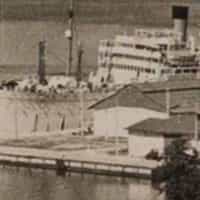- Détails
Changes to an urban marina soundscape associated with COVID-19 lockdown in Guadeloupe
Frédéric Bertucci, David Lecchini, Céline Greeven, Rohan M.Brookere, Lana Minier, Sébastien Cordonnier, Malika René-Trouillefou, Eric Parmentier
Environmental Pollution. Volume 289, 15 November 2021, 117898
Voir le communiqué du CNRS: L’anthropause de 2020 a permis aux poissons de la marina de Pointe-à-Pitre (Guadeloupe) de faire des vocalisations plus faibles.
- Détails
Biodiversity Data Journal 9 : e69022 (22 Jul 2021)
- Détails

Pour accéder à l'article du CNRS.
- Détails
L'Observatoire Hommes-Milieux Littoral Caraïbe est fier d'avoir co-financé une étude menée par Pierre Sabatier, Laboratoire EDYTEM UMR5204, démontrant un lien entre résurgence de la chlordécone et utilisation du glyphosate aux Antilles françaises.
Cette étude est publiée dans Environmental Science and Technologie.









